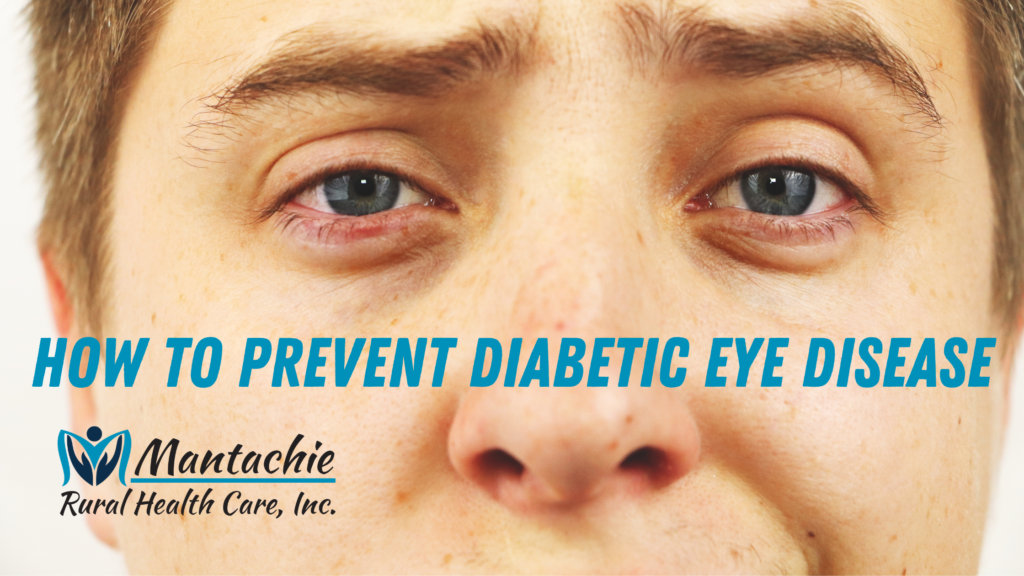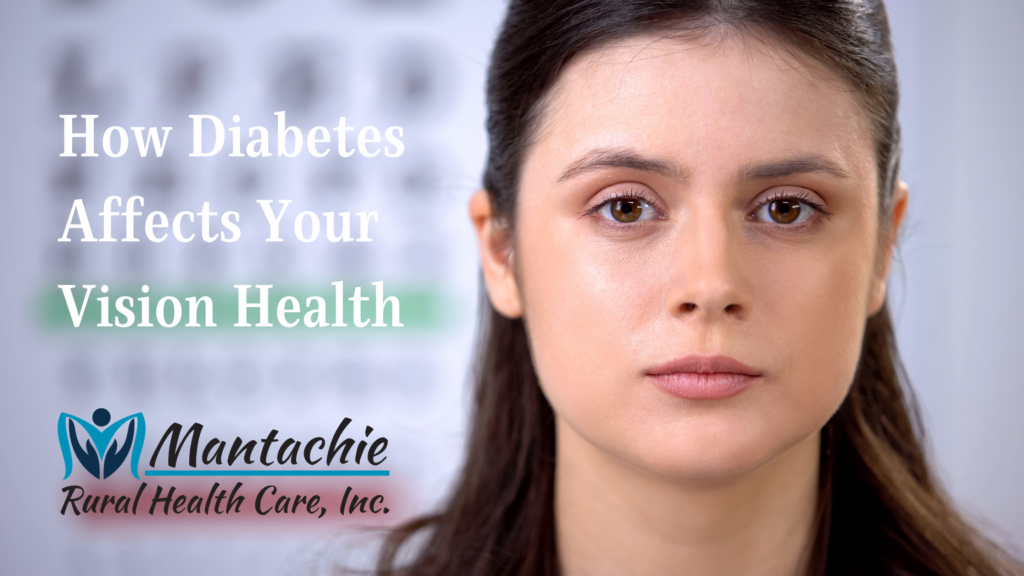
It’s Vision Month and the perfect time to discuss how to prevent diabetic eye disease. Diabetic eye disease is actually a group of complications including glaucoma, cataract, and diabetic retinopathy. Each of these diseases can lead to vision loss or blindness. Early detection, timely treatment, and careful follow-up may help prevent vision loss.
How Diabetes Causes Eye Disease
Diabetic eye disease is caused when uncontrolled or poorly controlled diabetes leads to damage of the retina’s blood vessels. Damage to these blood vessels can lead to swelling of the macula, the central part of the retina that allows you to see details.
Damage to the retina caused by diabetes can also lead to bleeding or scarring of the eye, glaucoma (high blood pressure in the eye), and even retinal detachment. Read more about diabetic eye diseases here.
Prevent Diabetic Eye Disease
Although diabetic retinopathy is a leading cause of vision loss around the world, many of these cases can be prevented with proper eye care and diabetic care. In fact, the first step in preventing diabetic vision loss is to control your diabetes. Controlling your blood sugar begins with a proper diet, regular exercise, and checking your blood sugar levels regularly.
Talk with your provider or dietitian about maintaining a diet low in sugar and simple carbs. Cook at home as often as possible using fresh ingredients and avoid consuming too much red meat. Don’t forget to add plenty of veggies to every meal.
Try to get at least 150 minutes of exercise each week, even if it’s a simple brisk walk a few days a week. Walks are one of the best and simplest ways to get in aerobic exercise. As always, discuss any new exercise or physical activity with your provider before you begin.
In addition to taking care of your diabetes, you should also schedule a dilated eye exam at least once a year with your eye care provider. Your provider may want to see you more often depending on your risk of vision problems. Early detection and treatment can save your vision.
Even patients who are already experiencing vision problems due to diabetes can get help and slow further progression of eye disease. Your eye care provider may be able to perform a laser procedure or refer you to a specialist who can perform the procedure to help stop the progression of eye disease and reduce swelling.
If you have diabetes, you need a primary eye care provider to assist your diabetes care providers in preventing complications caused by the disease. Your primary care provider can refer you to an eye care specialist if you don’t currently have one. To schedule an appointment with your Mantachie Rural Healthcare provider, click here.



